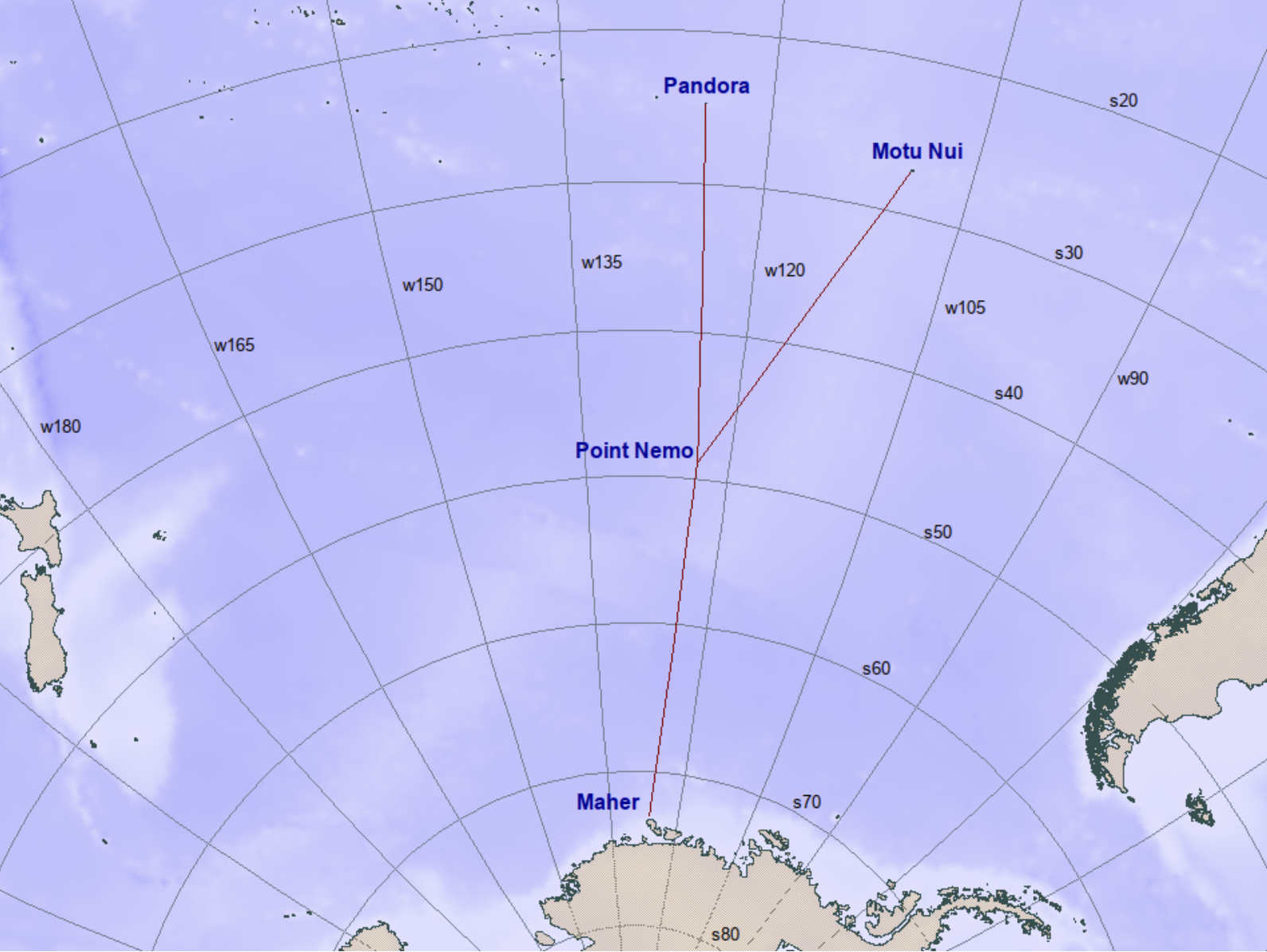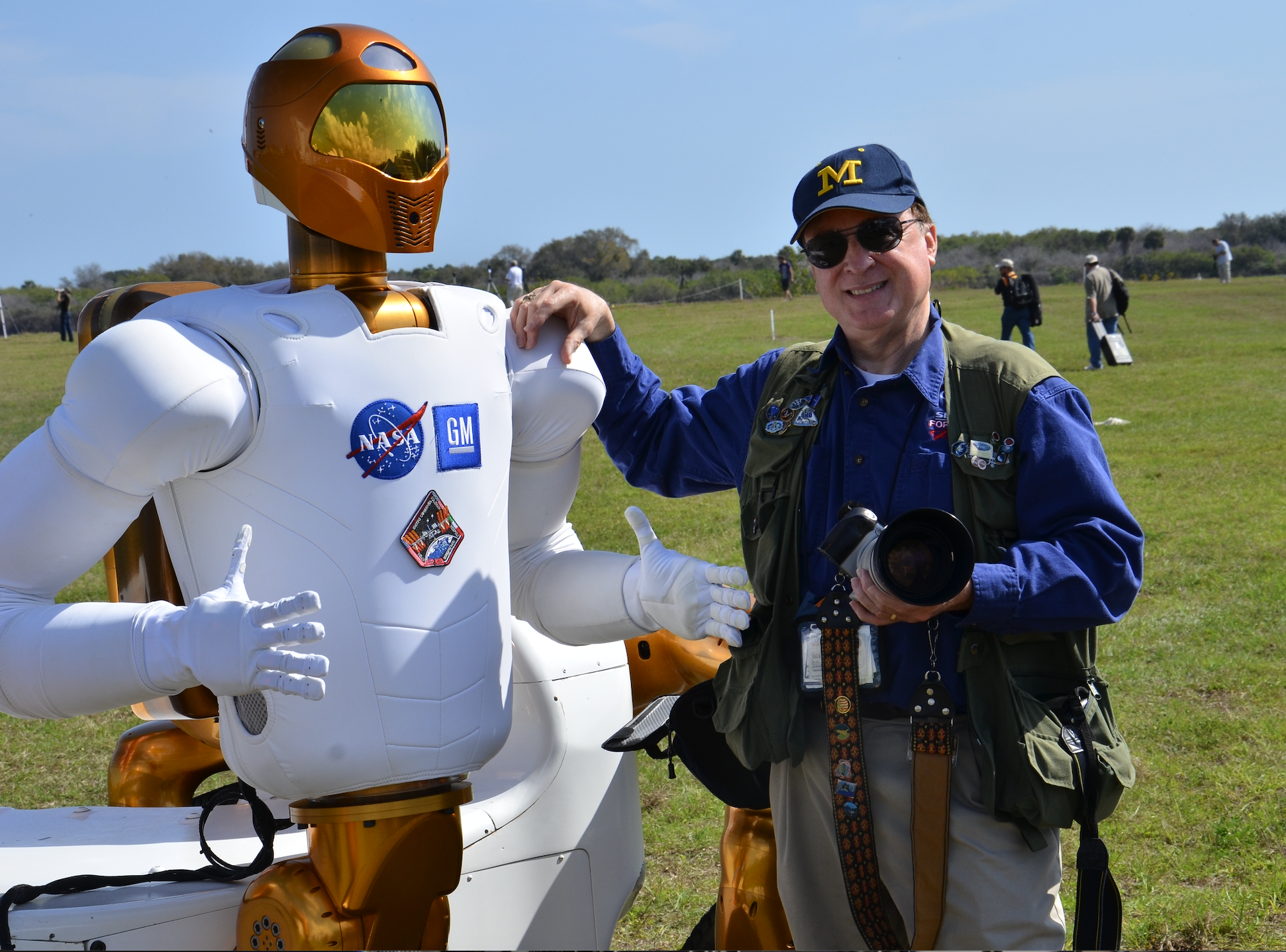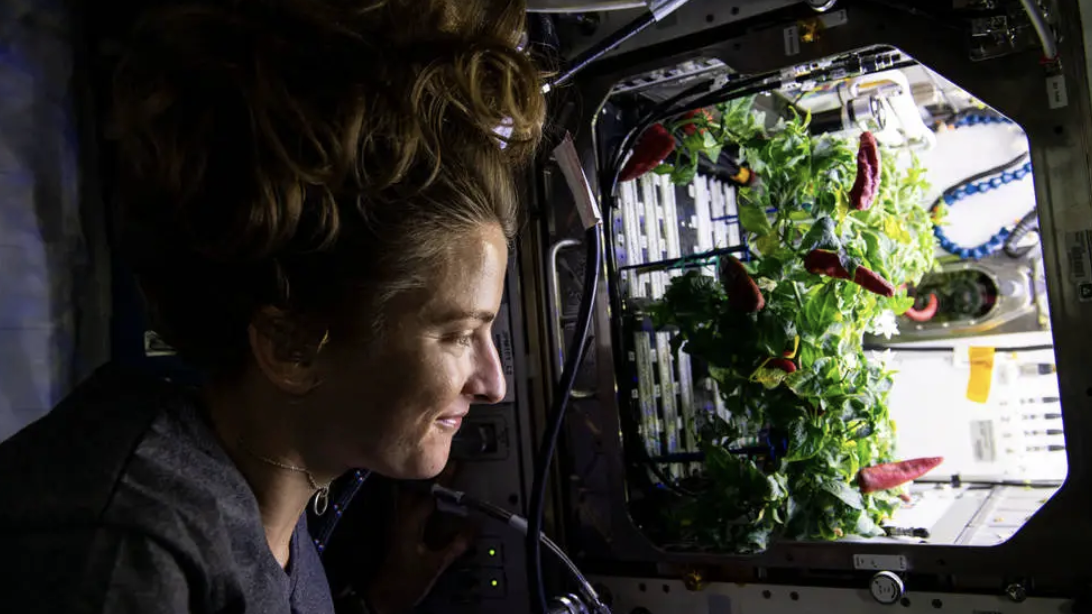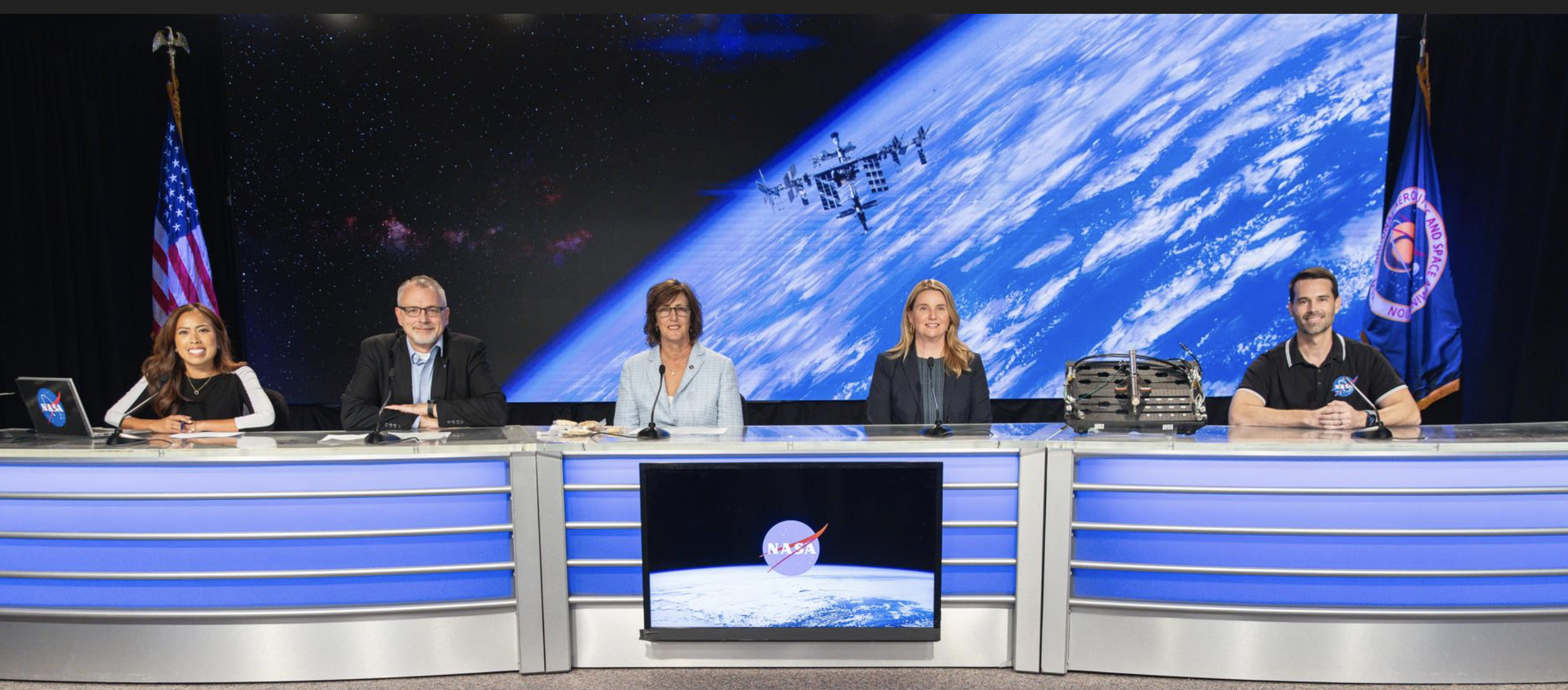Space Station 101:
A Brief History, Accomplishments, and Plans
By Jim Siegel
The International Space Station (ISS) has been hailed as a marvel of engineering and human endeavor, not to mention the largest object to be inserted by humans into Earth orbit. As part of NASA's effort to better publicize the ISS itself and its benefits to those of us back on earth, a special Space Station 101 media briefing was conducted on September 27, 2024, at Kennedy Space Center. Featured were NASA Associate Director Jim Free, NASA ISS Director Robyn Gatens, NASA ISS Chief Scientist Jennifer Buchli, and NASA Commercial Crew Program Dragon Engineer John Posey.
Designed from 1984 to 1993, construction of the ISS began in the year 1998 with delivery of various major components into Low Earth Orbit (LEO) by a series of the Space Shuttle deliveries. The ISS is in orbit about 250 miles above the earth, is roughly the size of an American football field, with the interior volume of a typical 6-bedroom house. Remarkably, it has been continuously occupied for 23 years, since November 2000, 24/7, 365 days a year. The ISS is a marvel of humanity and international partnership in an era of otherwise tensions and mistrust. Five space agencies (Canadian, European, Japanese, NASA, and Russian Roscosmos) and 23 countries have cooperated to further scientific knowledge, commercial research and medical understanding that benefits the entire human race.
In 2005, Congress declared the ISS a National Laboratory to utilize the microgravity nature of the Station and available to U.S. researchers from small companies, research institutions, Fortune 500 companies, government agencies, and others, all interested in leveraging the space environment to solve complex problems on Earth. Findings are readily shared throughout the global community. In 2011, a nonprofit organization, the Center for Advancement of Science in Space (CASIS), was selected to manage the ISS National Lab, which receives at least 50 percent of the U.S. research allocation on the International Space Station to facilitate research that benefits humanity (NASA manages the other 50% and focuses on research for space exploration purposes).
The Station is also a test bed for technology and processes for the Artemis project that will take astronauts back to the Moon and then on the Mars.
The ISS is usually operated by a crew of seven astronauts (and an extensive ground team). The current addition of the two Boeing test pilots, Suni Williams and Butch Wilmore, brought the total to 9, and the recent addition of the two Crew-9 astronauts has swelled the number of occupants to 11. The Dragon spacecraft offers alternative sleeping quarters to the astronauts. Williams is currently the commander of the ISS.
The American SpaceX Dragon and Russian Soyuz spacecraft provide transport to and from the ISS, and when at the ISS they are completely docked in case of an emergency (e.g. rapid loss of atmosphere, fire or severe illness). Such an emergency has not occurred in the 23-year history of the ISS, thanks to redundant systems and the ability to do repairs or install replacement parts while in Earth orbit. However, if such an emergency did occur, the astronauts are said to be able to scramble into a spacecraft and push away from the Station in about an hour.
Roughly 4000 investigations have been or are being conducted aboard the ISS in the last 23 years, most of which have direct applications to earth-bound humans, ranging from agriculture improvements to creating new drugs for disease treatment. Perhaps most remarkable of all is the three-dimensional growth of human tissue. Although actual placement of these tissues into humans may still be many years off, growing replacement organs in space may eventually become the most important benefit of the ISS.
But the Station will not be orbiting the Earth indefinitely. In fact, it is planned to be decommissioned about the year 2030. Parts and pieces yet to be identified will be brought back for analysis and display in museums, universities, and other institutions. Rather than hanging out a "For Sale" sign and pass this marvelous machine on the others, NASA has instead hired SpaceX to build a vehicle to de-orbit the Station back to Earth, with its remains destined for a watery tomb in a remote place in the Pacific Ocean known as Point Nemo, a spacecraft graveyard.
Prior to the decommissioning, however, work is underway to have other LEO-orbiting stations in place for a seamless transition to one or probably more commercially-funded companies. Axiom Space, Voyager Space, and Blue Origin are reportedly in the running, with help from NASA seed-money (and American tax payers).
Examples of the many products and services that owe themselves to ISS discovery, research, and involvement can be found at https://www.nasa.gov/technology-transfer-spinoffs/.

This artist's digital concept depicts the completely assembled International Space Station (ISS) passing over Florida. Photo credit: NASA

The ISS was constructed in modules and sent for assembly to low earth orbit by a series of trips in the cargo bay of the space shuttles. As shown here, at Launch Pad 39B, one of Space Shuttle Discovery's payload bay doors is being closed. Inside the payload bay can be seen the multi-purpose logistics module Leonardo, at bottom, and the integrated cargo carrier above it. Mission STS-121 was launched on July 4, 2006, carrying this cargo and a crew of seven on the 12-day mission to the International Space Station. Photo credit: NASA/Jim Grossmann

The International Space Station (ISS) is planned to crash into Point Nemo in 2031. Point Nemo, a reference to Jules Verne's Captain Nemo from the 1870 novel Twenty Thousand Leagues under the Sea, has been calculated as the furthest point from land on planet Earth. The wider area is also known as a spacecraft cemetary because hundreds of decommissioned satellites, space stations, and other spacecraft have been made to fall there upon re-entering the atmosphere, to lessen the risk of hitting inhabited locations or maritime traffic. Photo credit: Wikipedia.

The author shown here with Robonaut, a human-shaped robot sent to the ISS to help astronauts with maintenance and routine chores. Photo credit: Mike Howard.

NASA astronaut Kayla Barron observes chile peppers growing inside the ISS Advanced Plant Habitat that recently bore fruit. Overcoming the challenges of growing fruit in microgravity is important to NASA for long-duration missions during which crew members will need good sources of Vitamin C to supplement their diets. Photo credit: NASA

NASA leaders participated in an International Space Station 101 Panel Livestream inside the John Holliman Auditorium of the News Center at the agency's Kennedy Space Center in Florida on Friday, Sept. 27, 2024, ahead of NASA's SpaceX Crew-9 mission to the International Space Station. Participants, from left to right, are Megan Cruz, NASA Communications; NASA Associate Administrator Jim Free; Robyn Gatens, director, NASA's International Space Station Program, and acting director, NASA's Commercial Spaceflight Division; Jennifer Buchli, chief scientist, NASA's International Space Station Program; and John Posey, Dragon engineer, NASA's Commercial Crew Program. Photo Credit: NASA